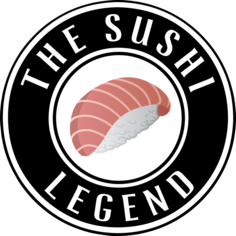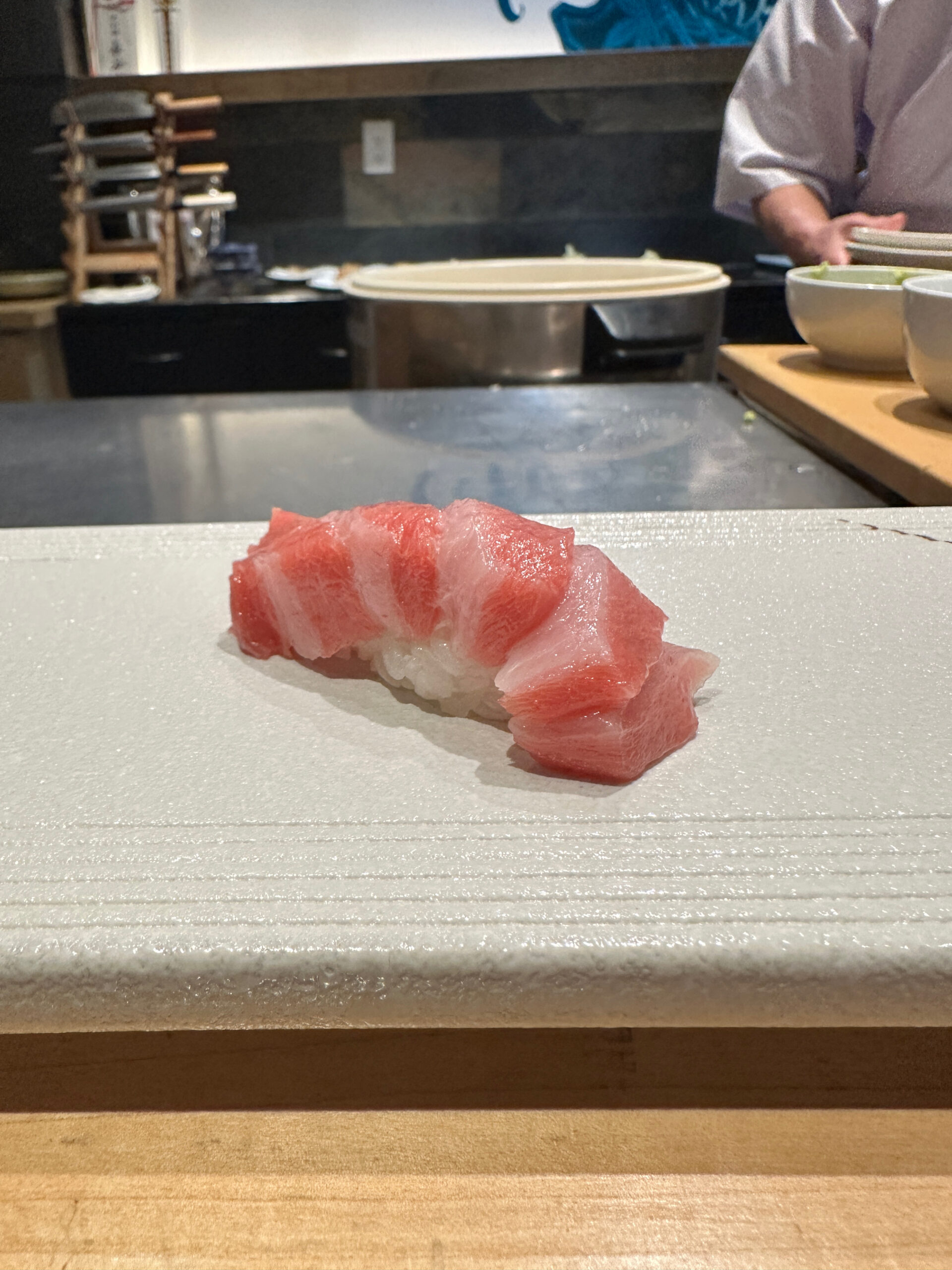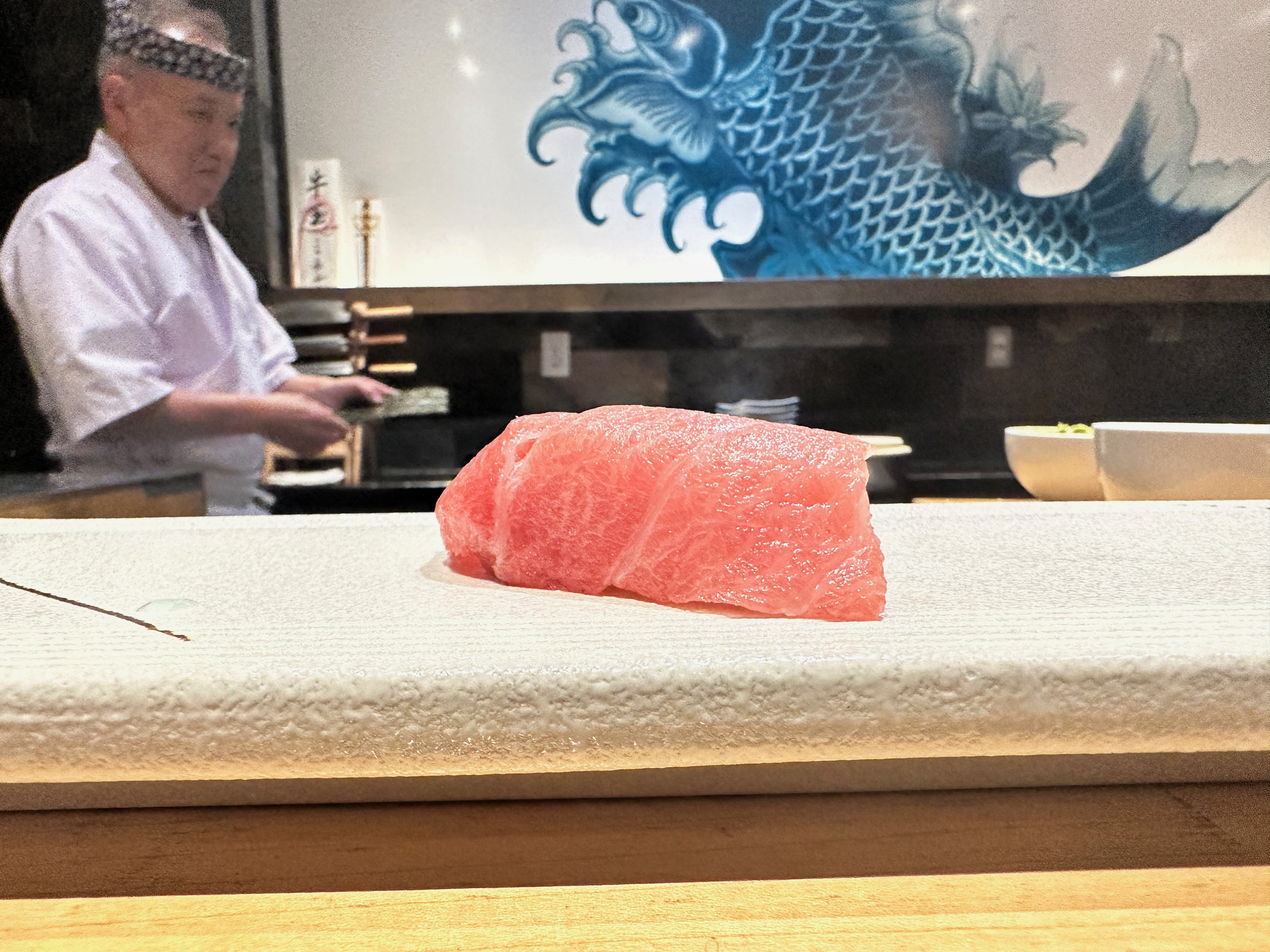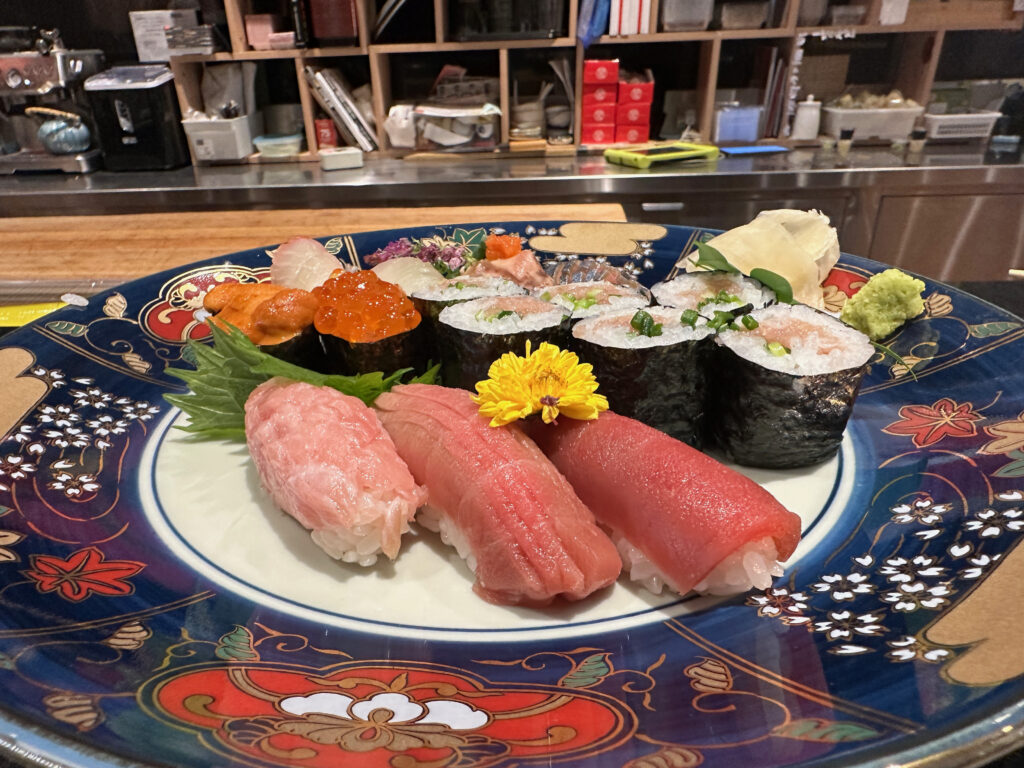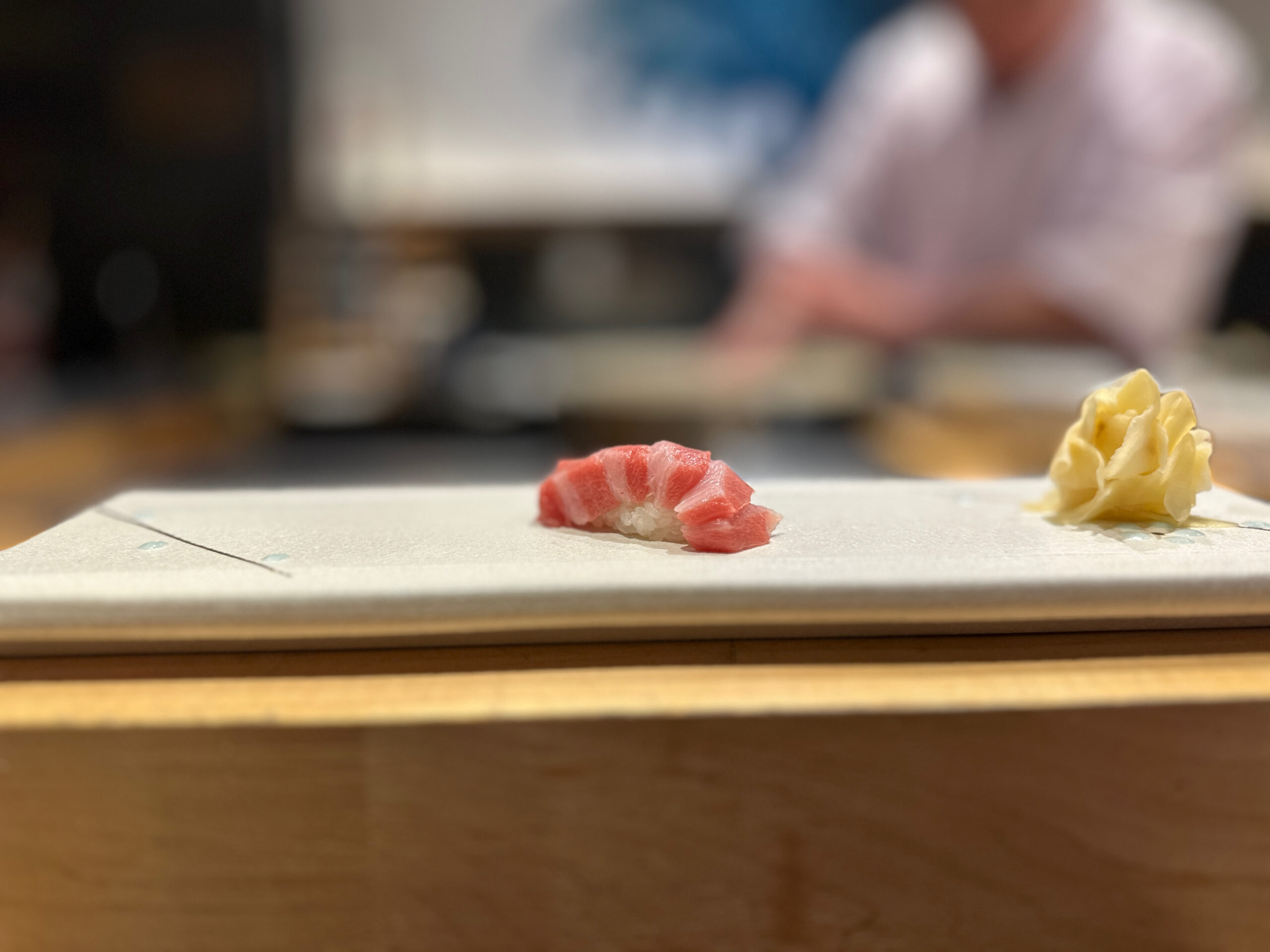
I love this picture
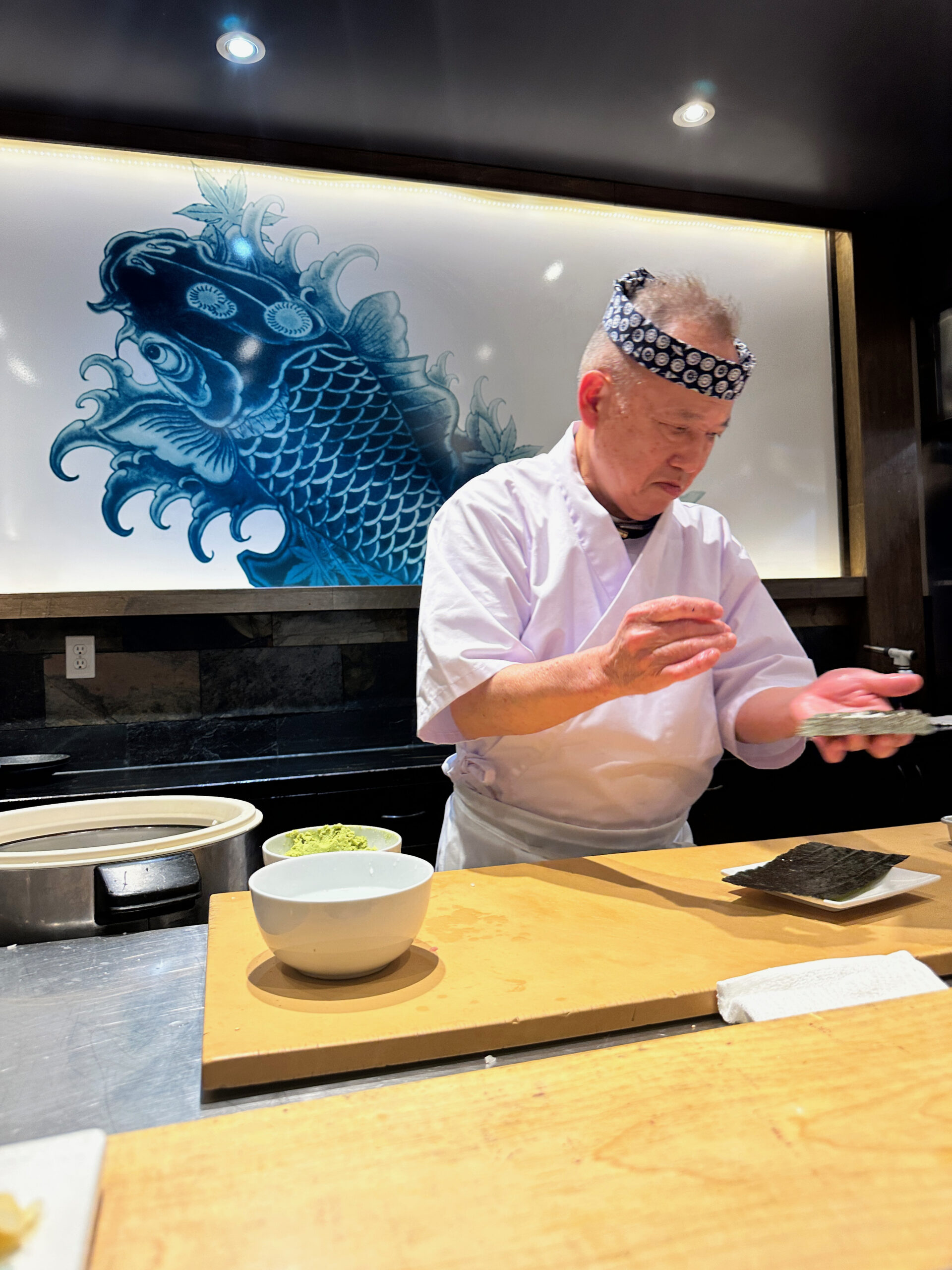
A real life Toronto Sushi Legend
I don’t want to be dramatic but this blog wouldn’t exist without Sushi Kaji
Legends, the year was 2012. The Mayans had yet again failed to predict the apocalypse.
It was also my first time at Toronto’s Sushi Kaji. Kaji first surfaced on my radar thanks to the Zagat guide. If you’re not familiar, before there was Yelp and Google, we all relied on a secret cabal of Zagat critics to tell us where to eat. It was crazy.
Fortunately, society has evolved. We now rely on a secret cabal of Michelin critics to tell us where to eat. Progress.
13 years is more than long-enough for a re-review
Check out my 2012 review here; fair warning, it’s a hilarious time capsule of this blog. Or read on for a more updated version.
Sushi Kaji – just Kaji Japanese Cuisine on the marquee – sits in a non-descript Etobicoke strip mall.

Kaji is located next door to Papa John’s. Don’t let that fool you.
Mitsuhiro Kaji opened his namesake in 2000, and family members have joined him since. The ratio is about 1 staff member for every 2 customers, and the sushiya is naturally renowned for excellent service.
It’s also known for great sushi
Speaking of 2012, Kaji is regularly more packed than the Guvernment was (IYKYK). 10 counter seats and 4 tables are turned twice a night, at 6:00pm and 8:15pm. Omakase-only, with Okonomi (a la carte) after. Nigiri at the counter is served one-at-a-time, while the tables are served by the platter.
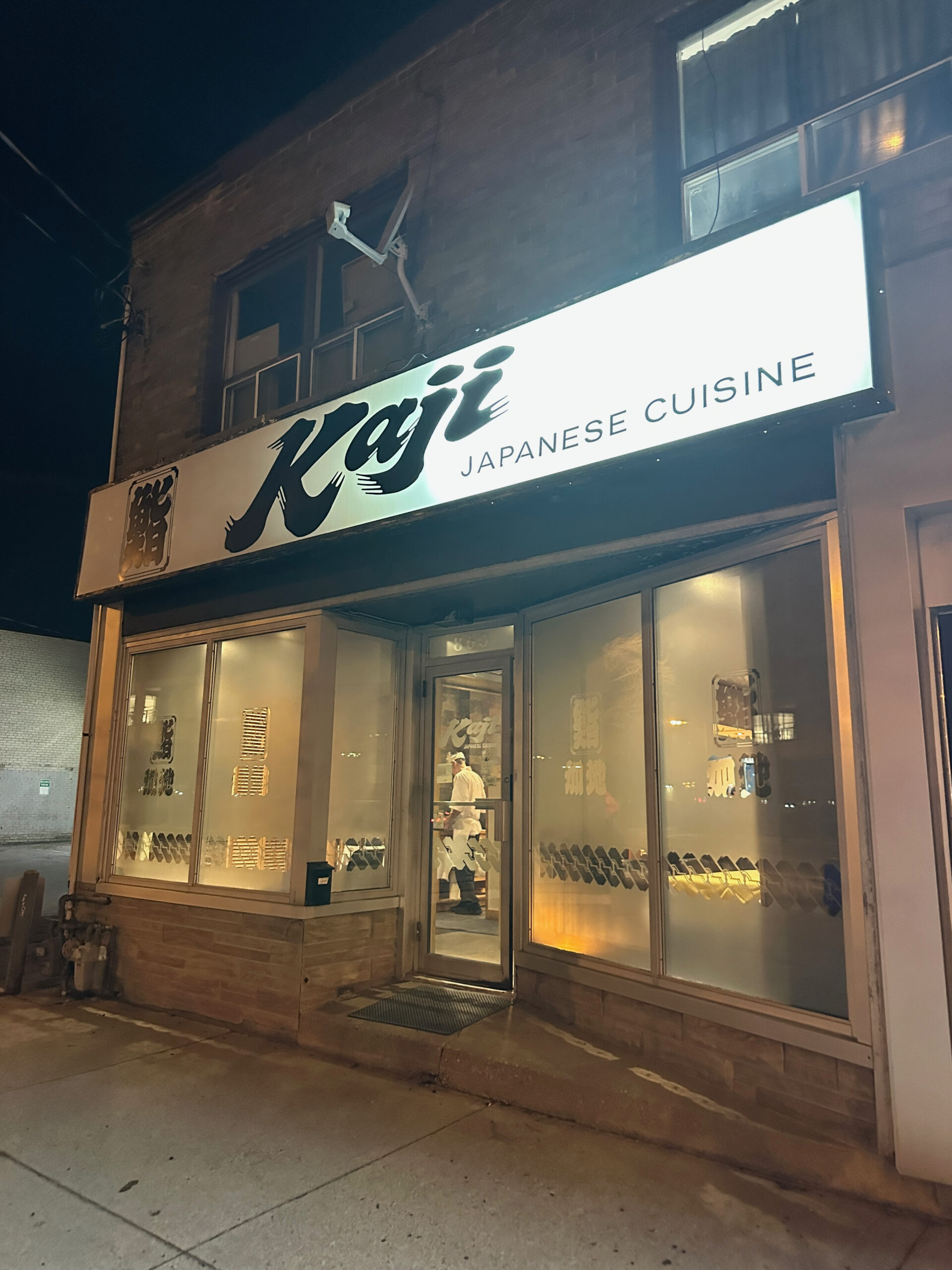
Outside Sushi Kaji
For this visit, we requested (politely, as one does in Canada) to sit in front of Kaji-san. That’s not for the sushi; during our visit, Kaji-san prepared the nigiri for the tables. It’s for the show.
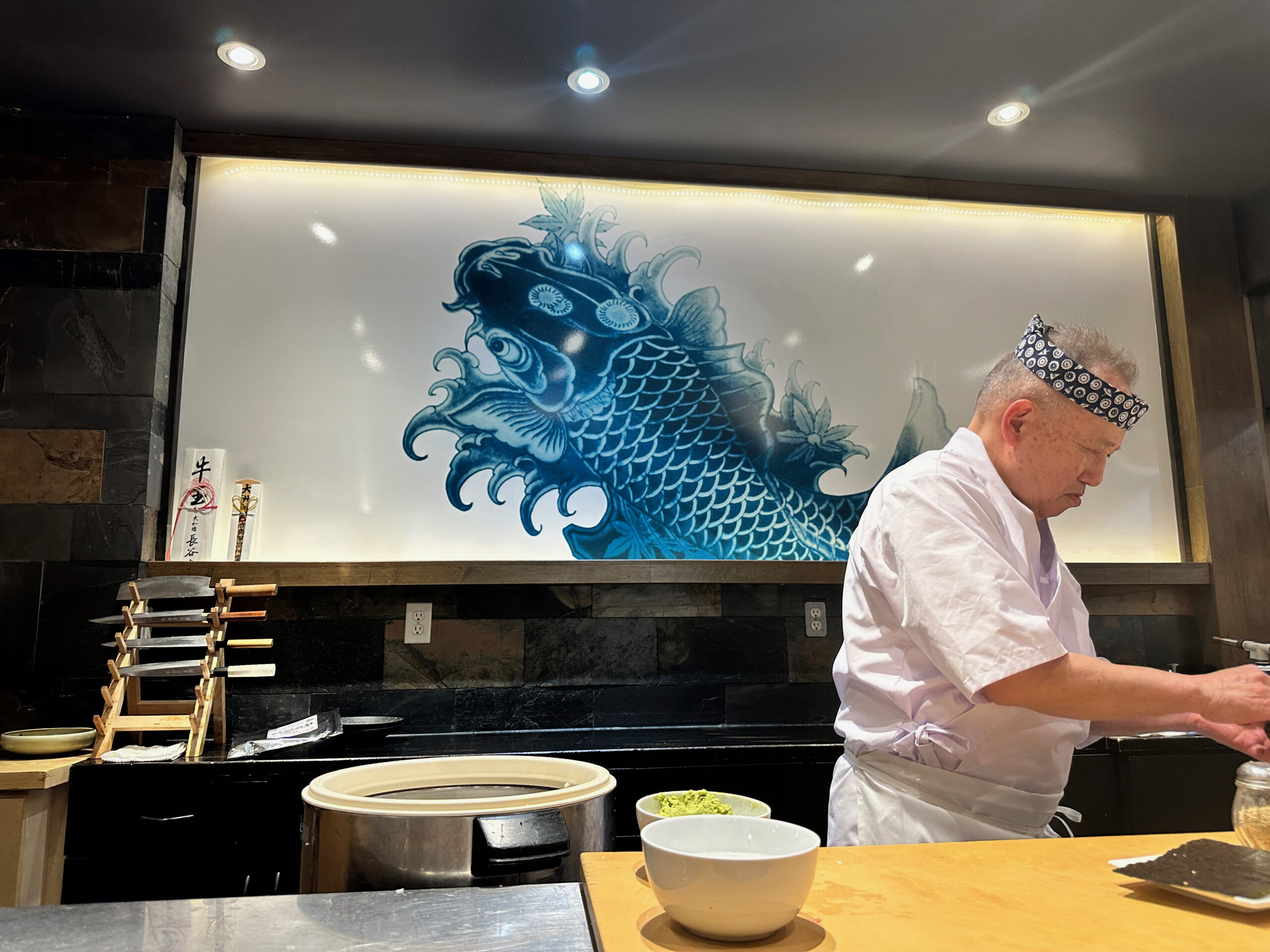
Kaji-san in front of the restaurant’s famous art
Kaji-san interacts with everyone, often chiding customers – playfully – for not finger picking their sushi, or, even worse, dumping it into the provided shoyu (Sushi Kaji does not apply nikiri, another unique quirk).
We ordered the 17 course, $125 – CAD! – Omakase
That’s less than $100 USD with one of the continent’s true shokunin (artisans). Think about this – there are chalkboard omakase spots in New York that cost more. Shit, there’s a movie theatre in New York that costs more.
It also left room to order a la carte (Okonomi) nigiri at the end. Big brain stuff.
More sushi at a sushi temple seems like a smart way to approach life.

Overflowing Sake, like it should be. The dish underneath is the dessert.
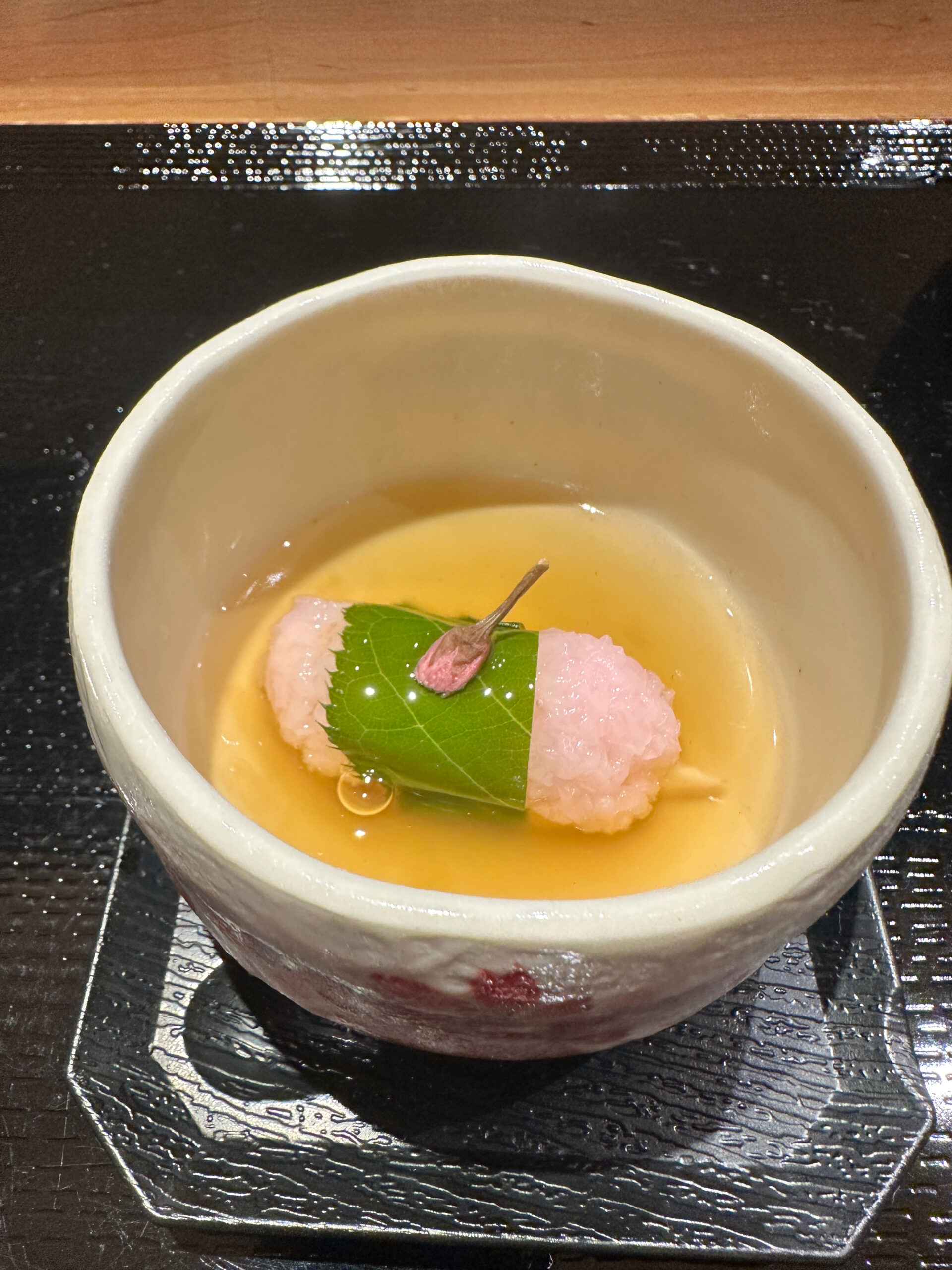
1: Hirame (olive flounder) with “sticky rice”
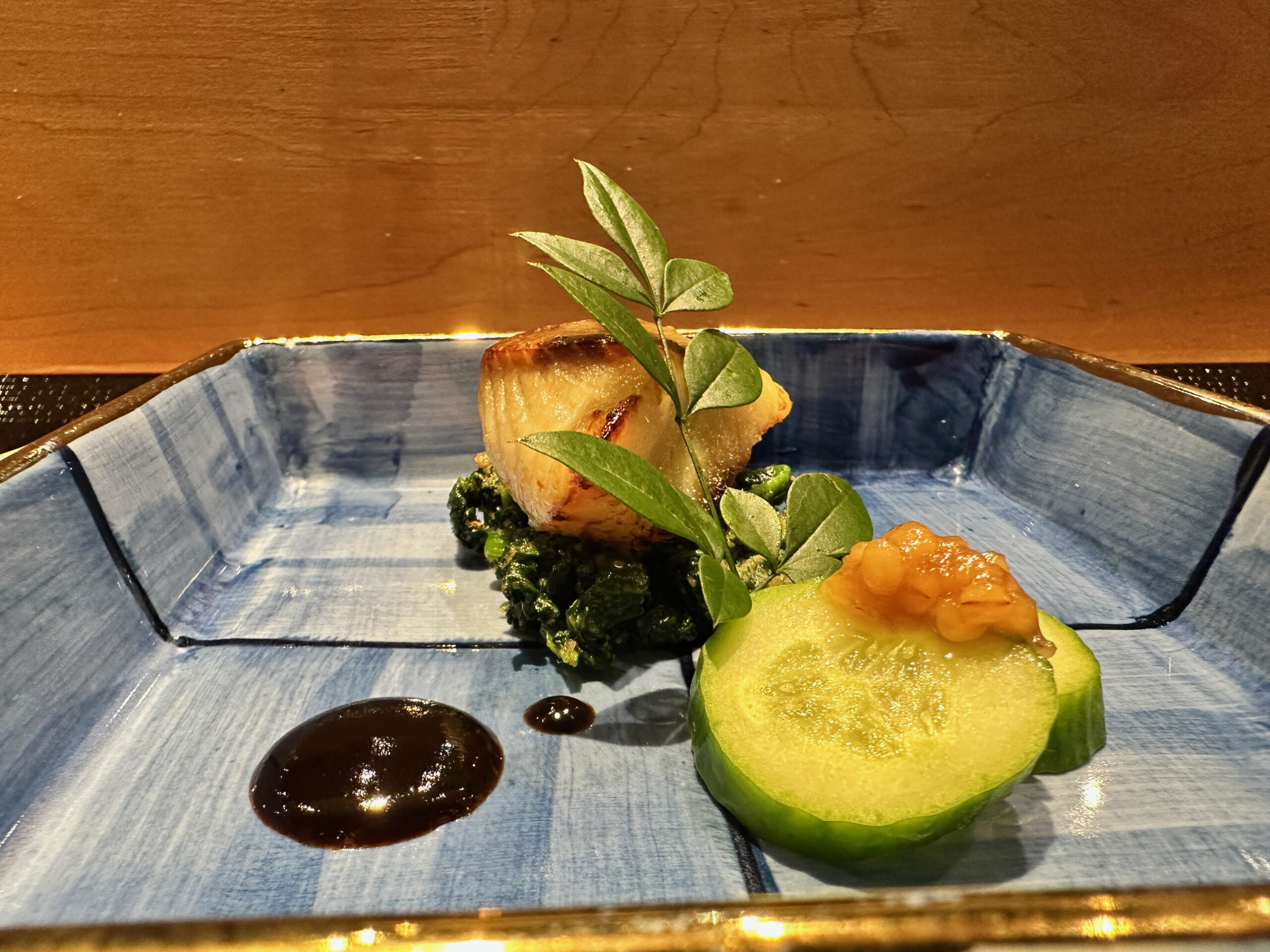
2: Gindara (black cod)
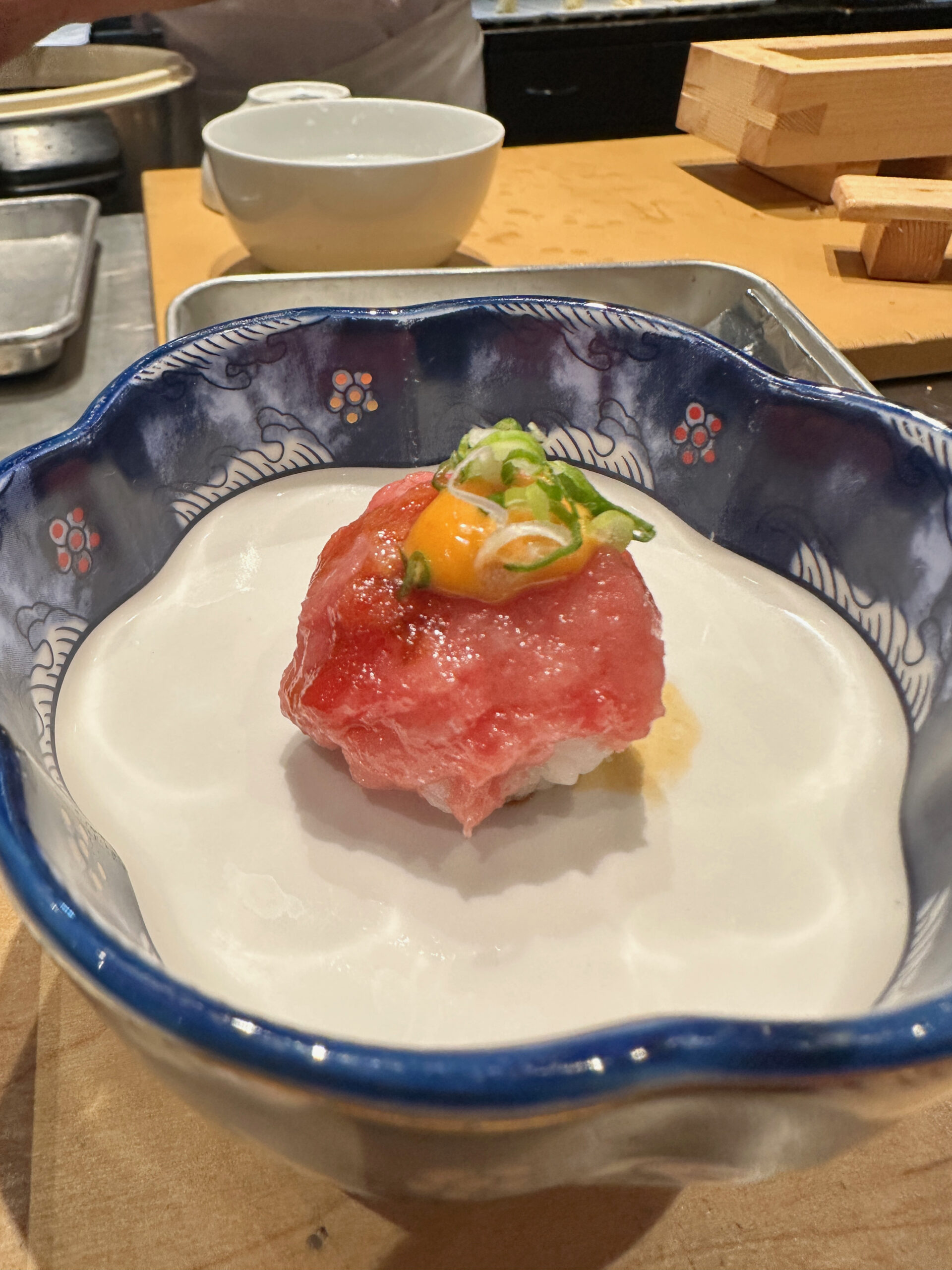
3: Tuna Tartare with spicy mayo – the one letdown of the evening. It was tasty but spicy mayo is the bane of my sushi existence
The sushi starts with Honmaguro (bluefin tuna)
That’s atypical for an Omakase, where milder tasting fish like shiromi usually lead. No qualms from me or my dining partner.

4: Akami (lean tuna)
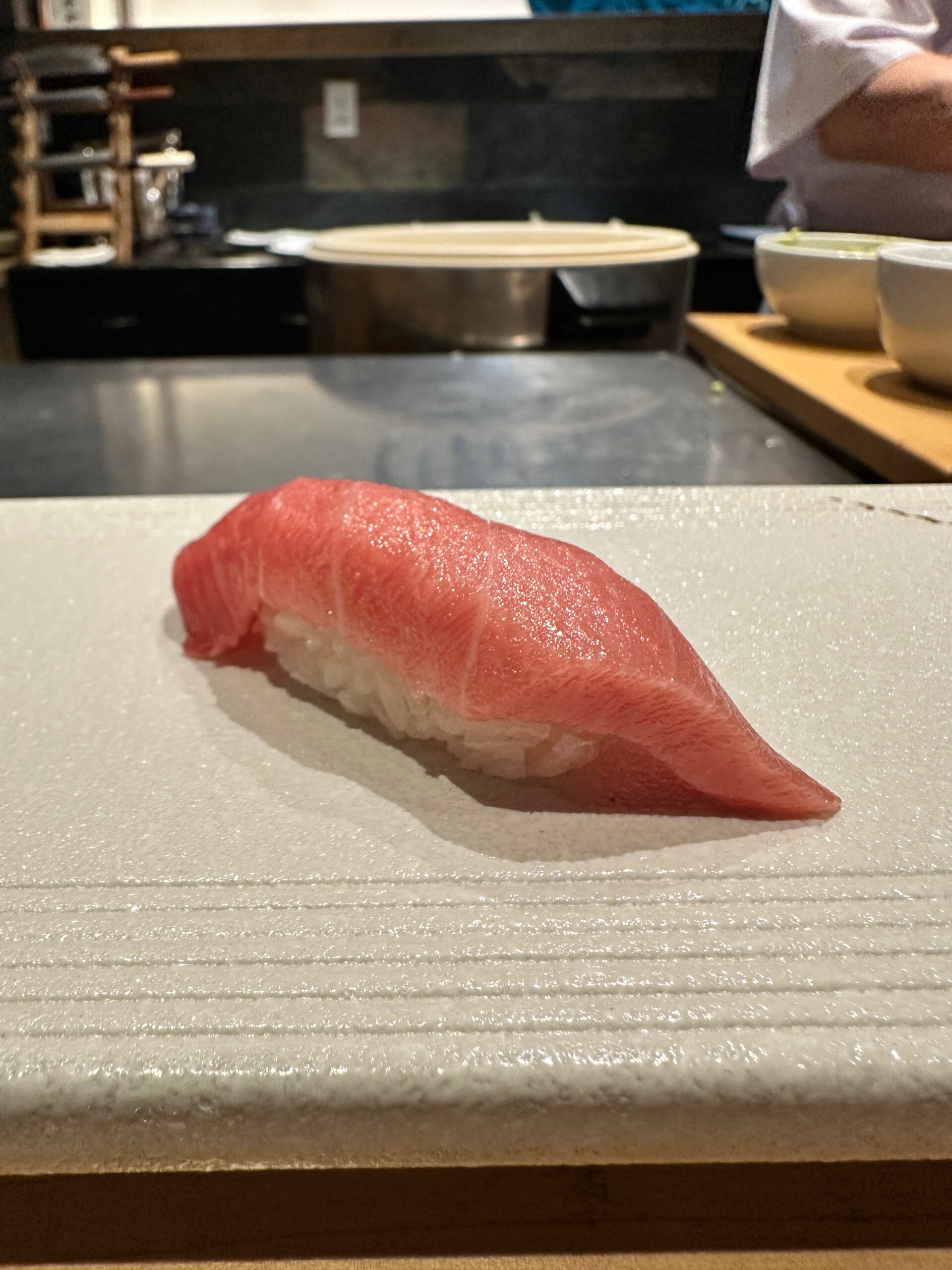
5: Chu Toro

Another angle of the Chu Toro

6: O Toro
Kaji-san and his oshizushihako
Oshizushi, or pressed sushi, is a form of sushi that originally comes from Osaka, in Japan’s Kansai region (remember that little nugget for later). Shari (sushi rice) is packed into a wooden rectangular box called an oshizushihako, and then a topping – usually seafood – is layered on top. Here, it was Unagi, and Kaji-san makes it himself. Neat process to watch.
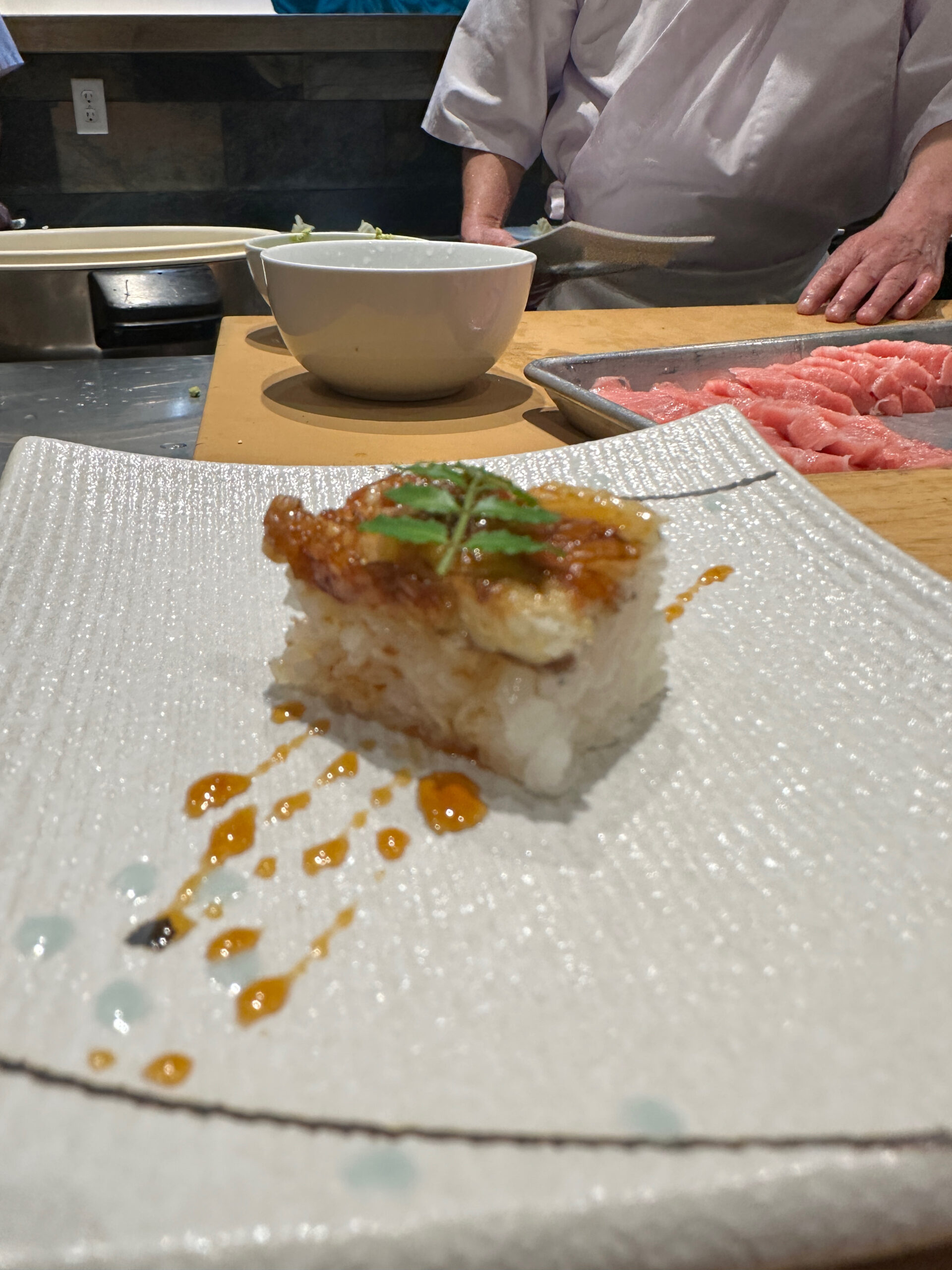
7: Unagi oshizushi
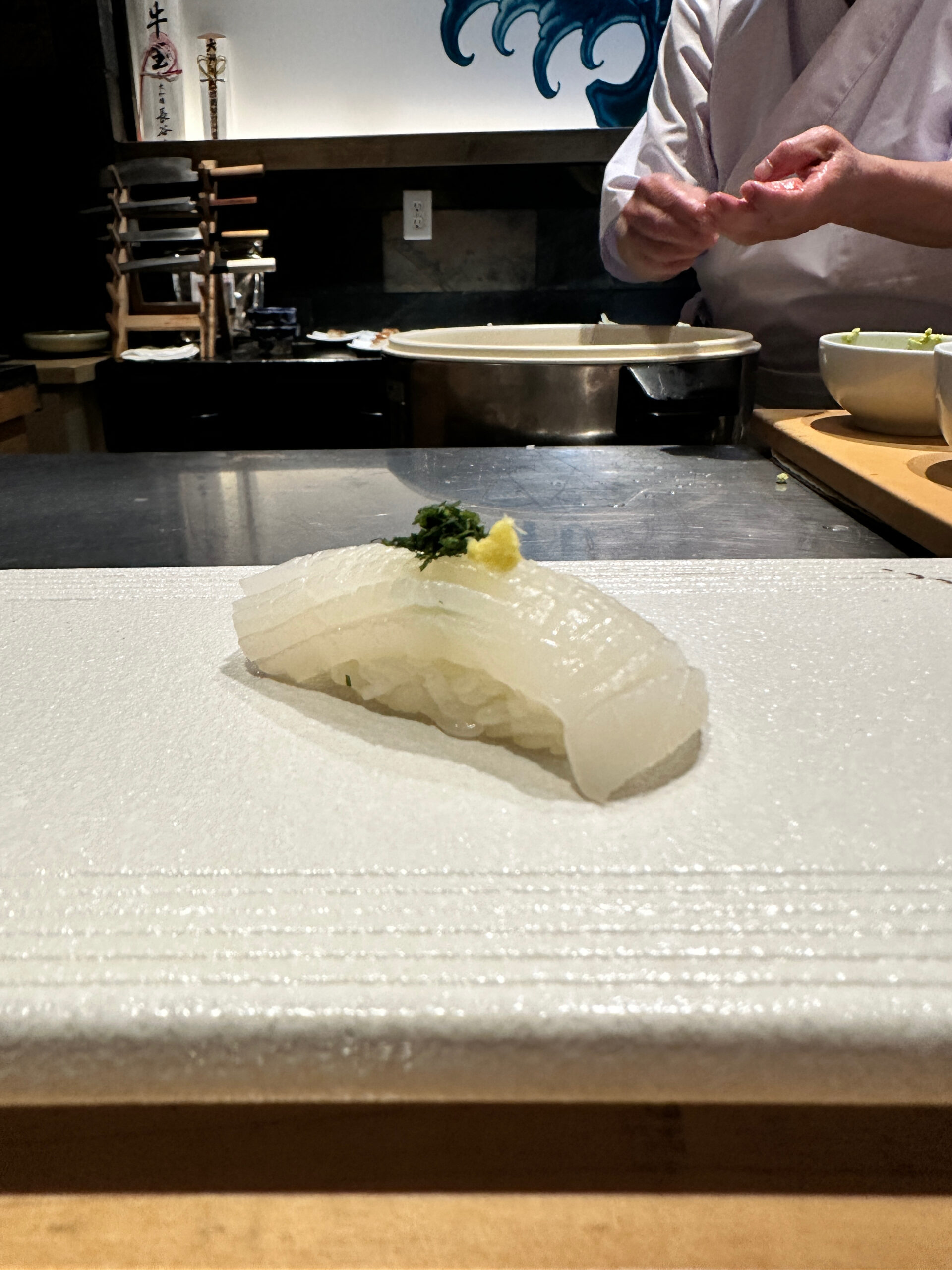
8: Sodeika (typical Ika)

9: Hirame (olive flounder)
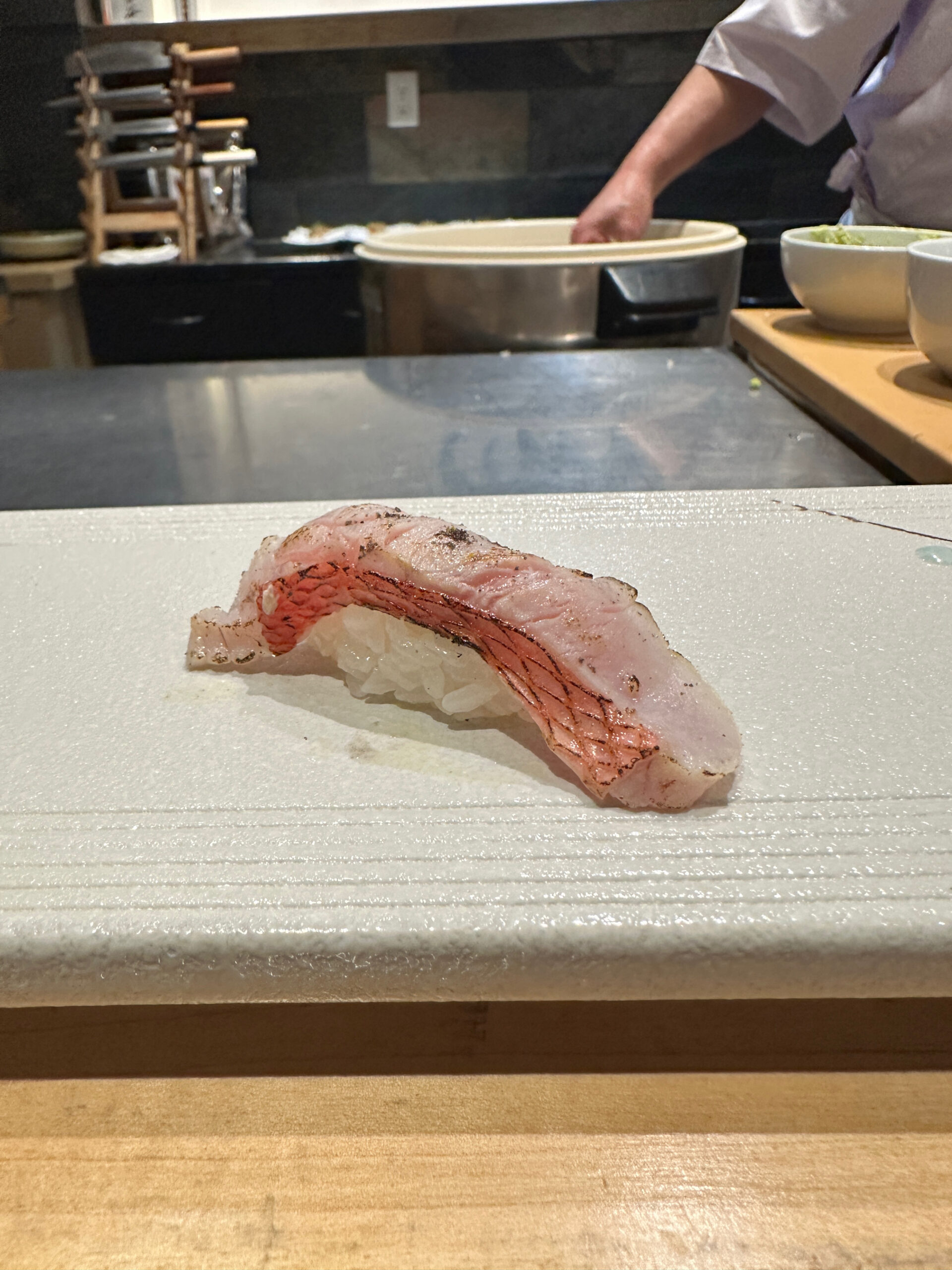
10: kinmedai
Most ingredients are from Japan, but Sushi Kaji will source elsewhere where necessary. Case in point, Ocean Trout, from Scotland.
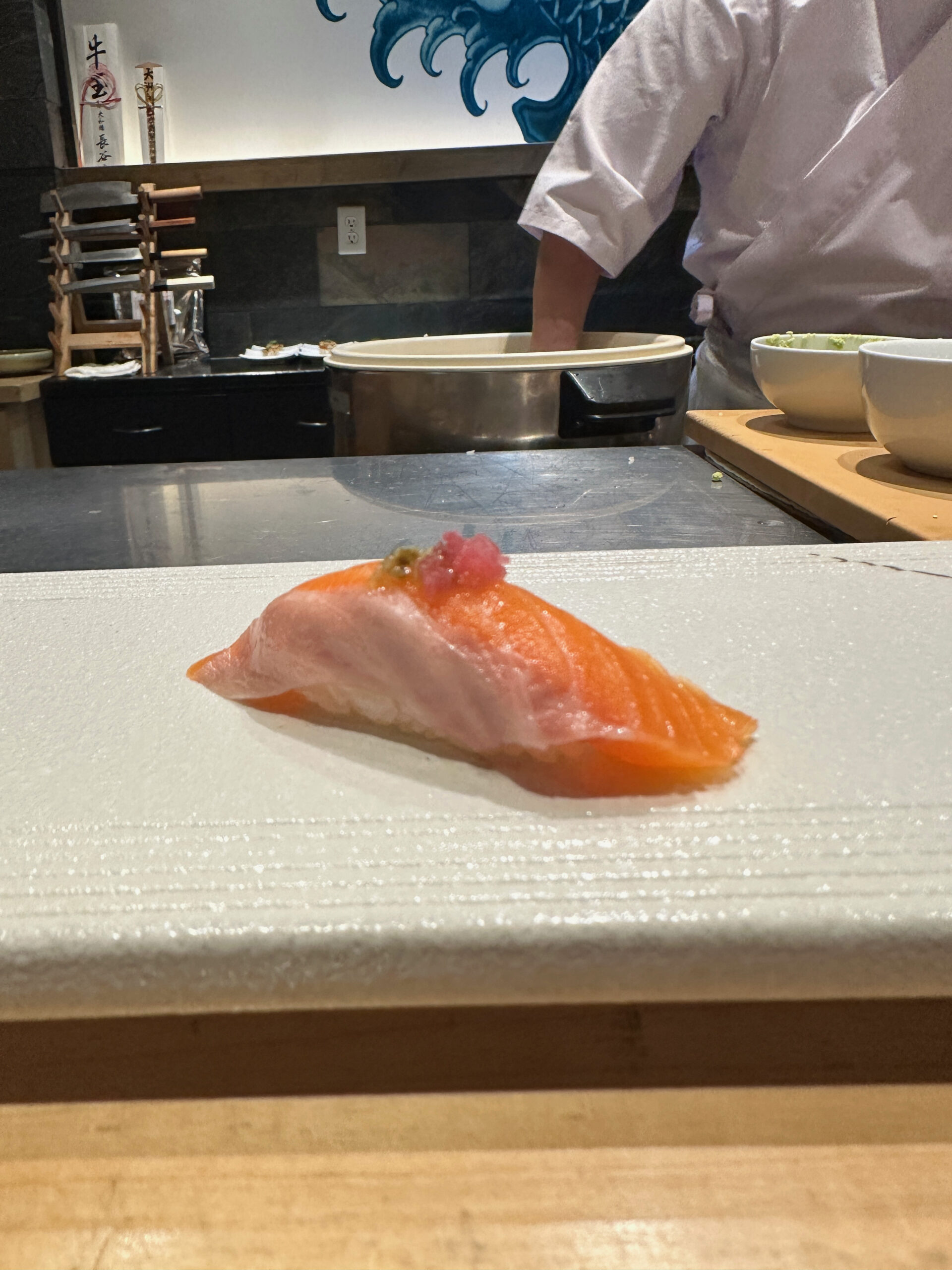
11: Umi Masu (Ocean Trout) from Scotland
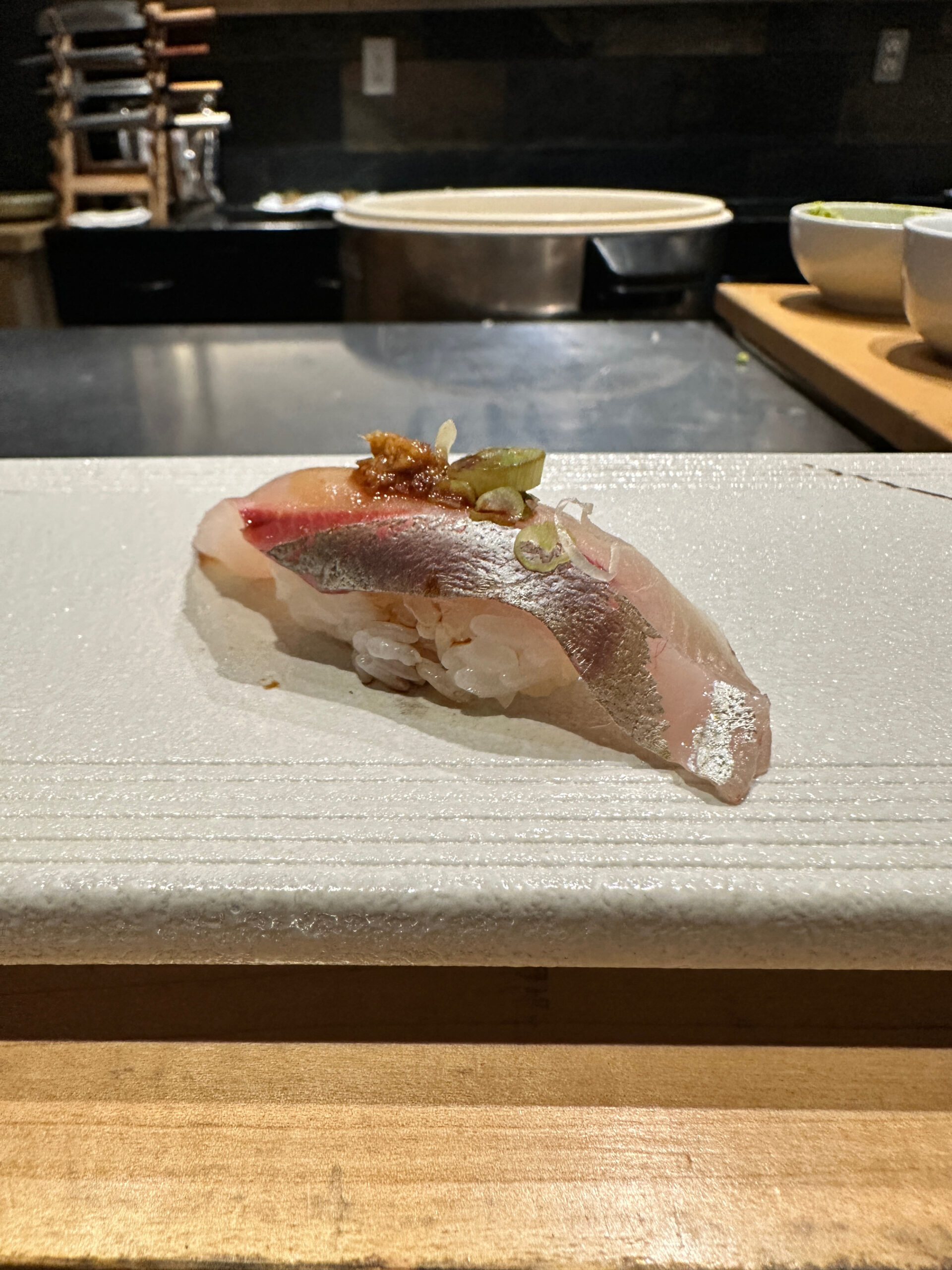
12: Shima Aji
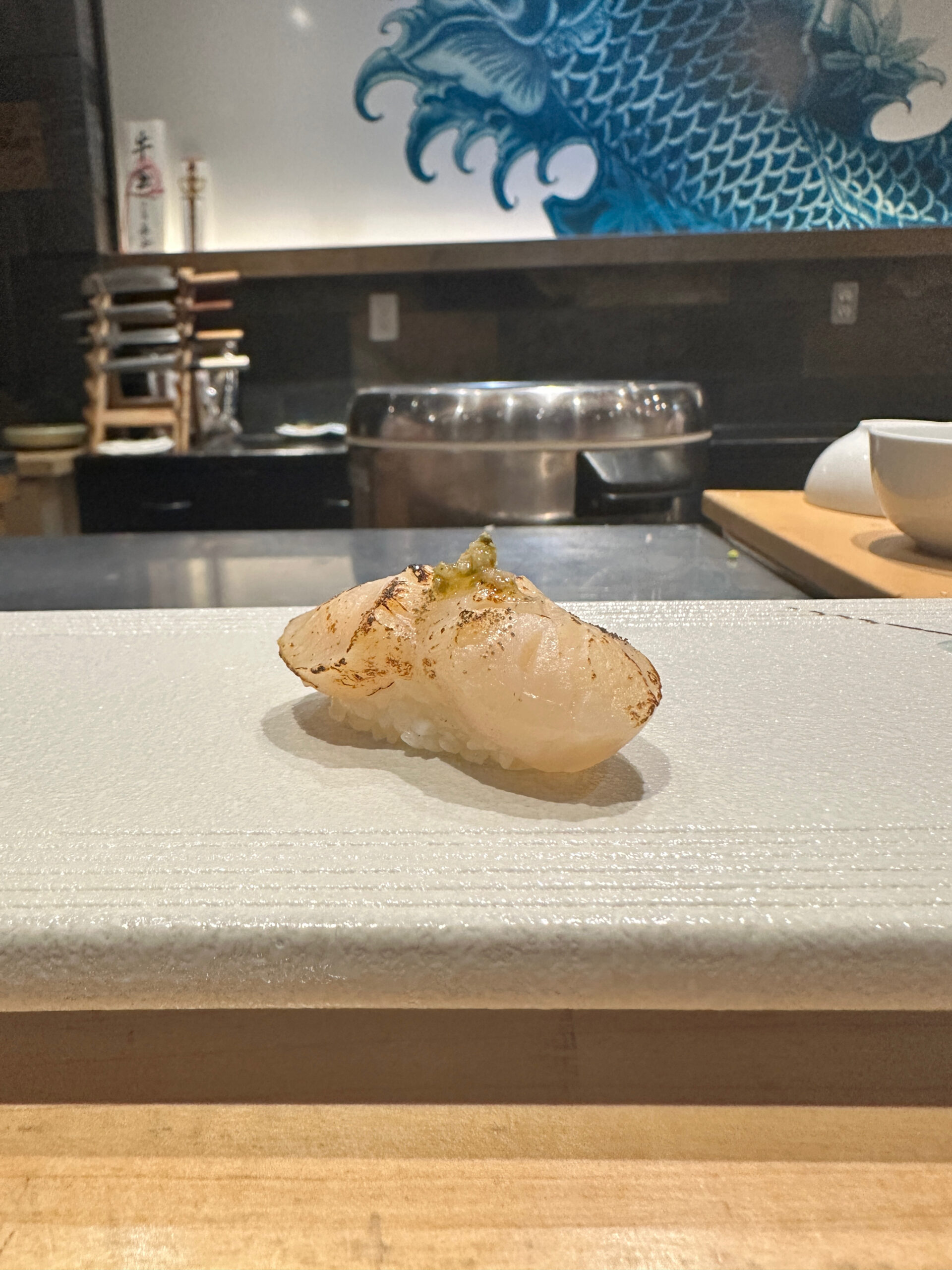
13: Hotategai
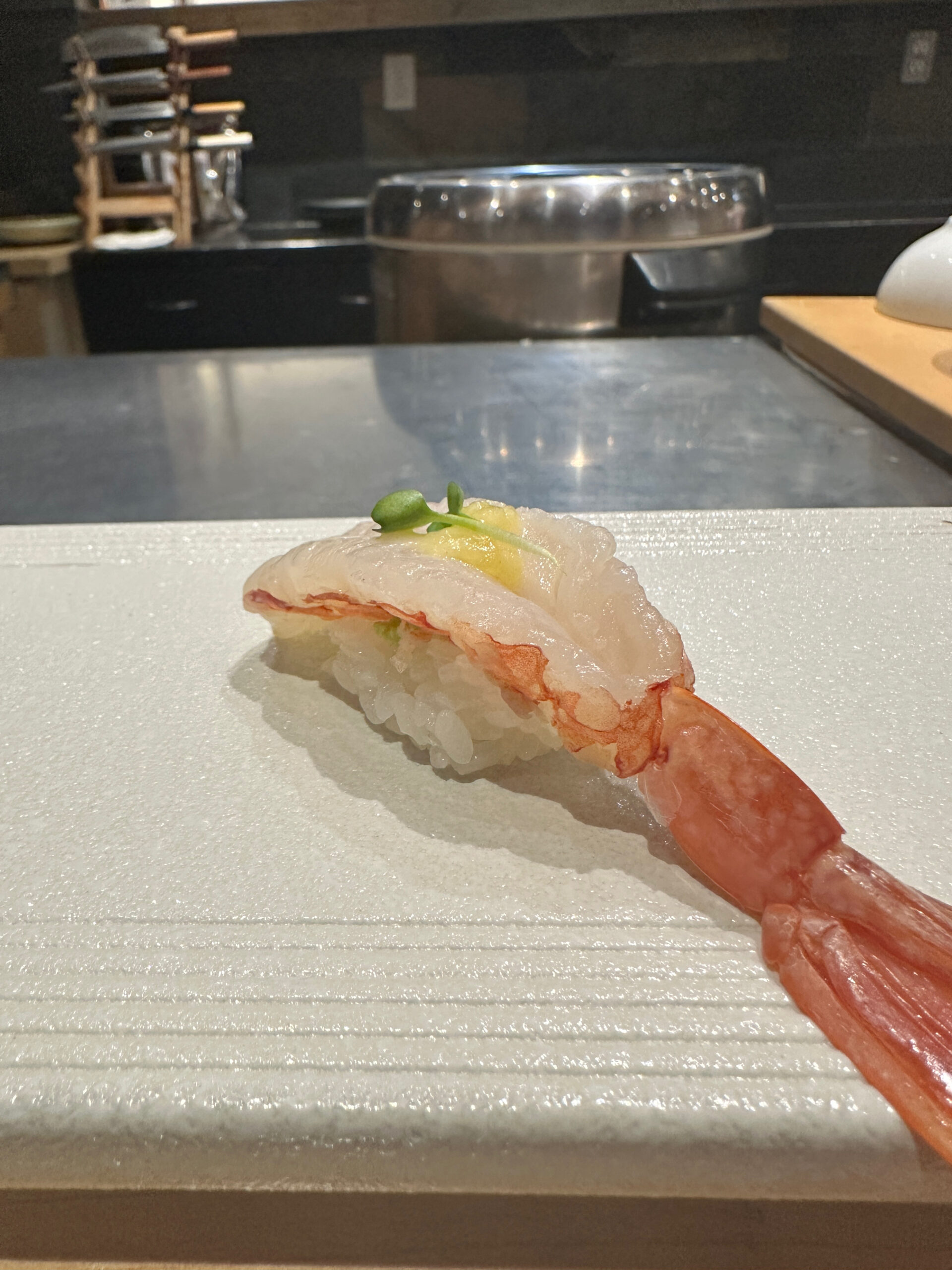
14: Called Aka Ebi (red shrimp), which is the name for many different types of shrimp. Believe it was Argentinean Red Shrimp.
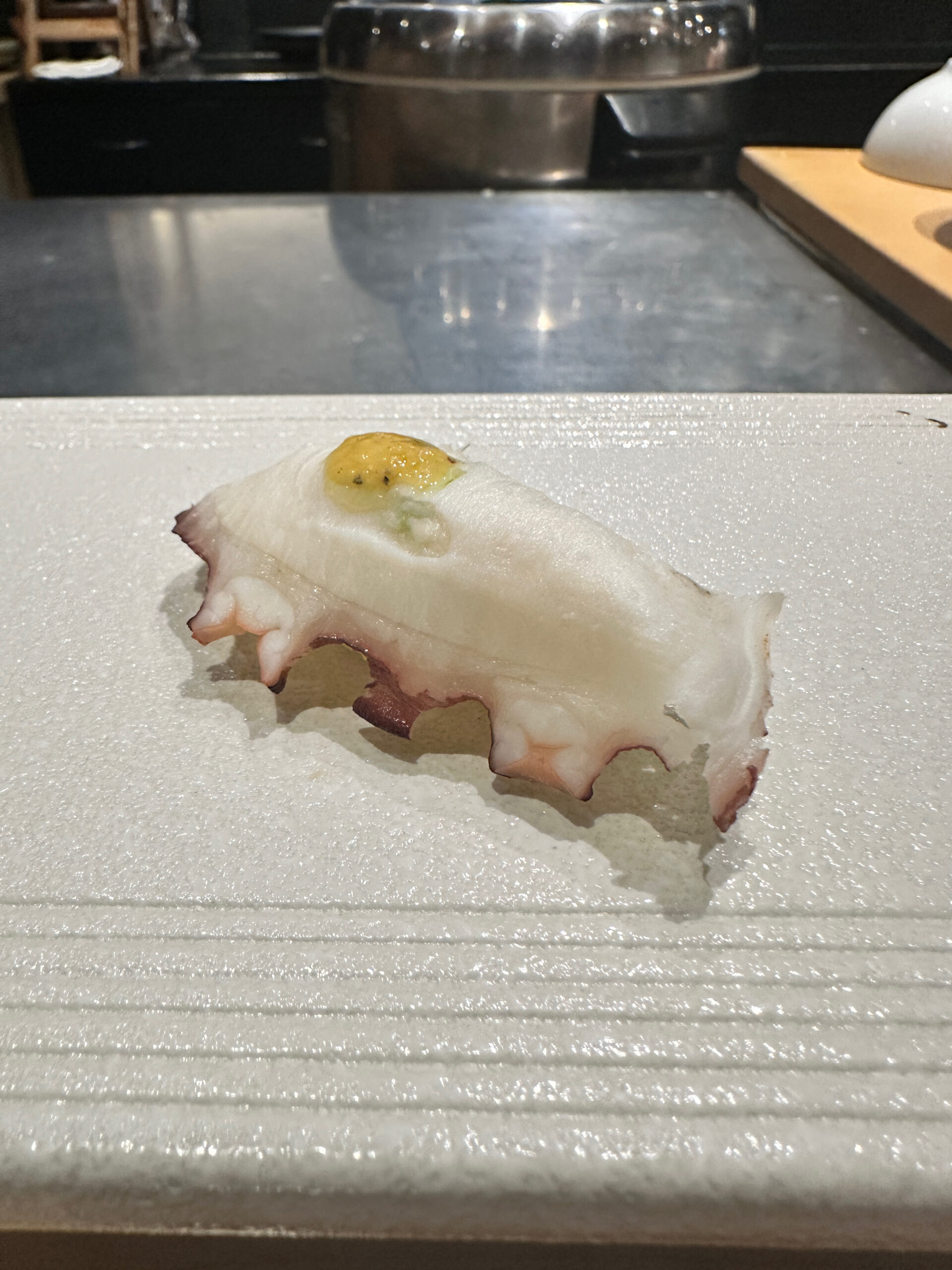
15: Tako

16: Kaji-san presents the Takuan temaki. This was outstanding.
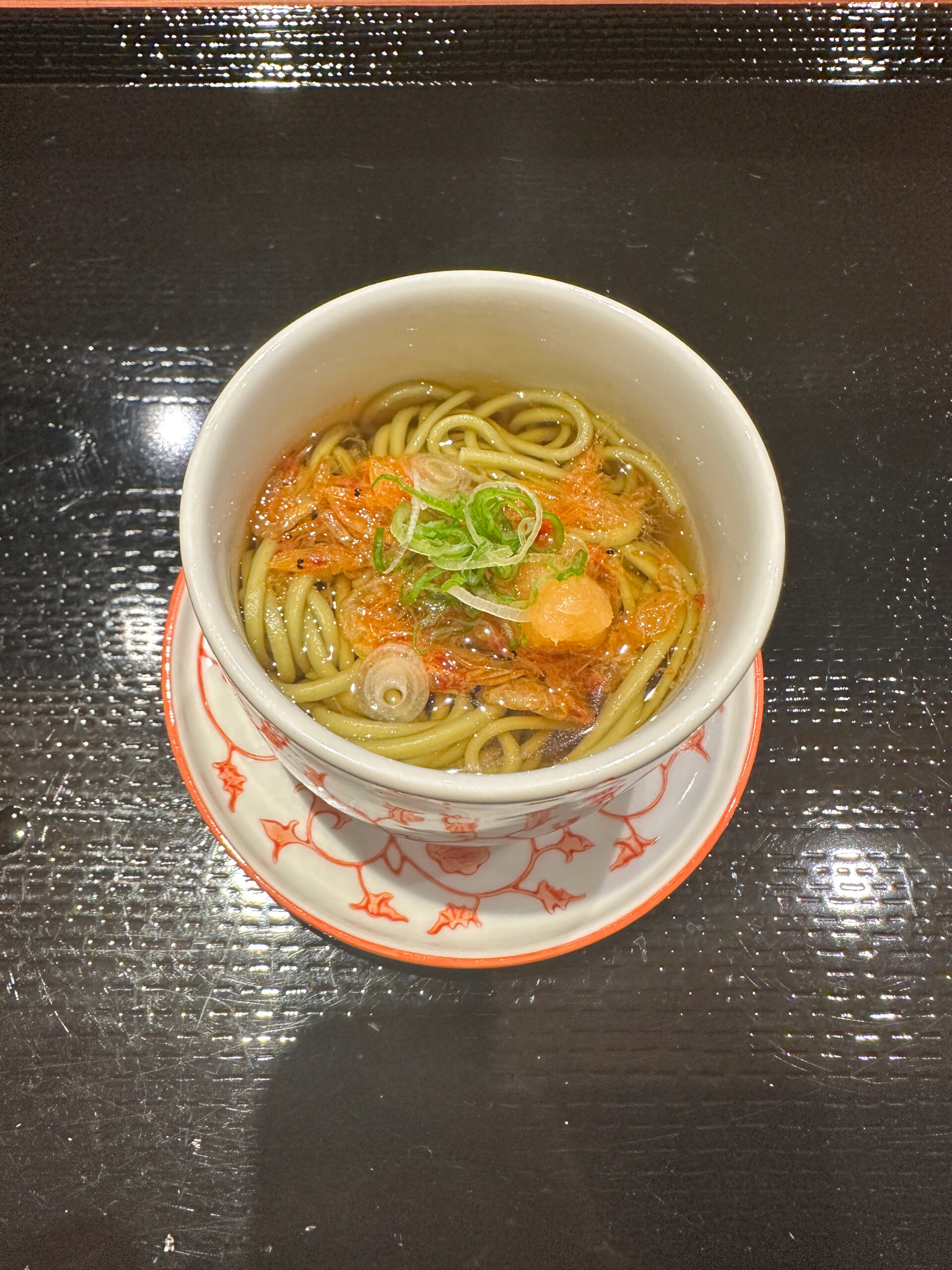
17: Soba with baby prawns
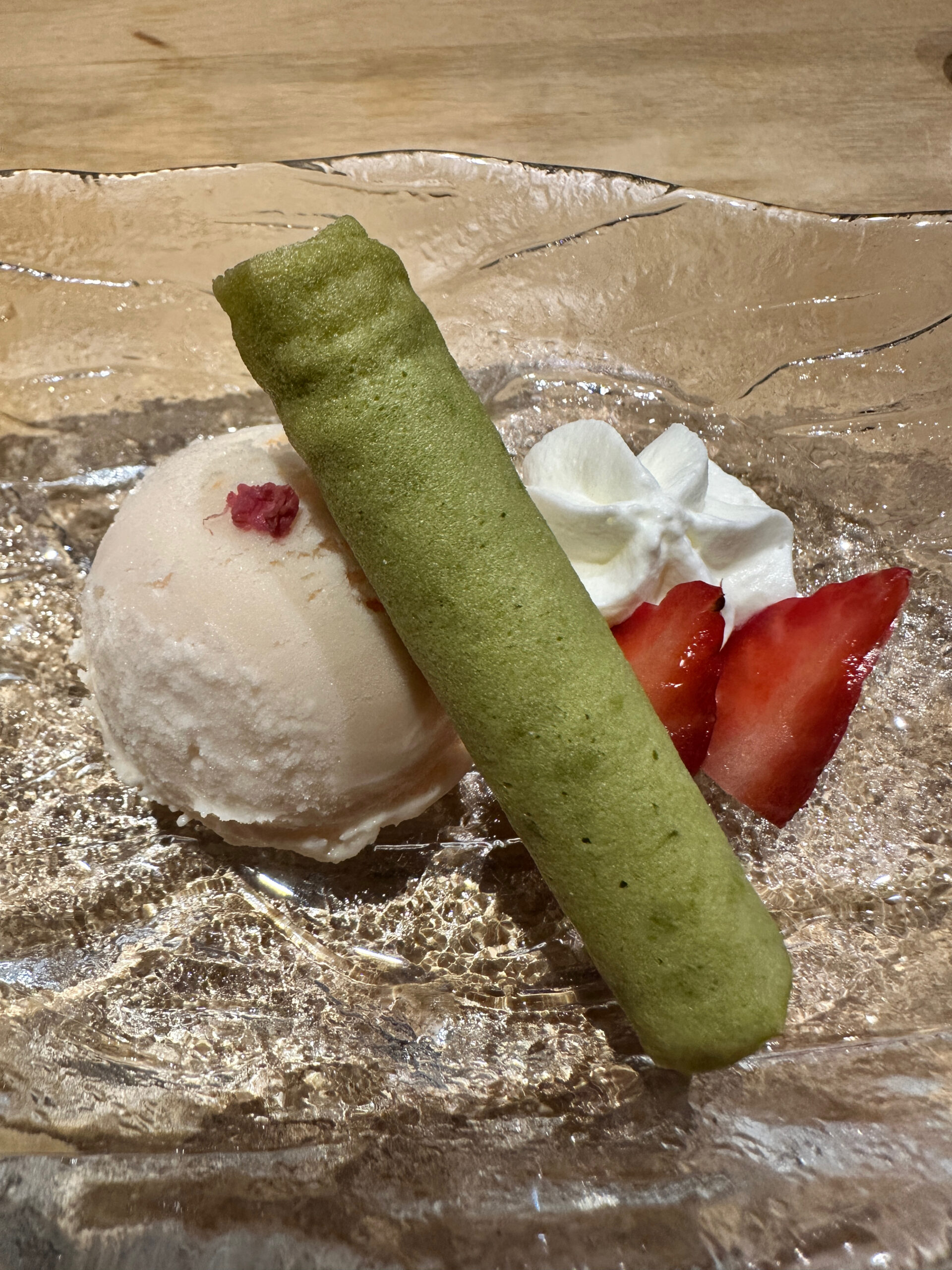
18: Yuzu sorbet
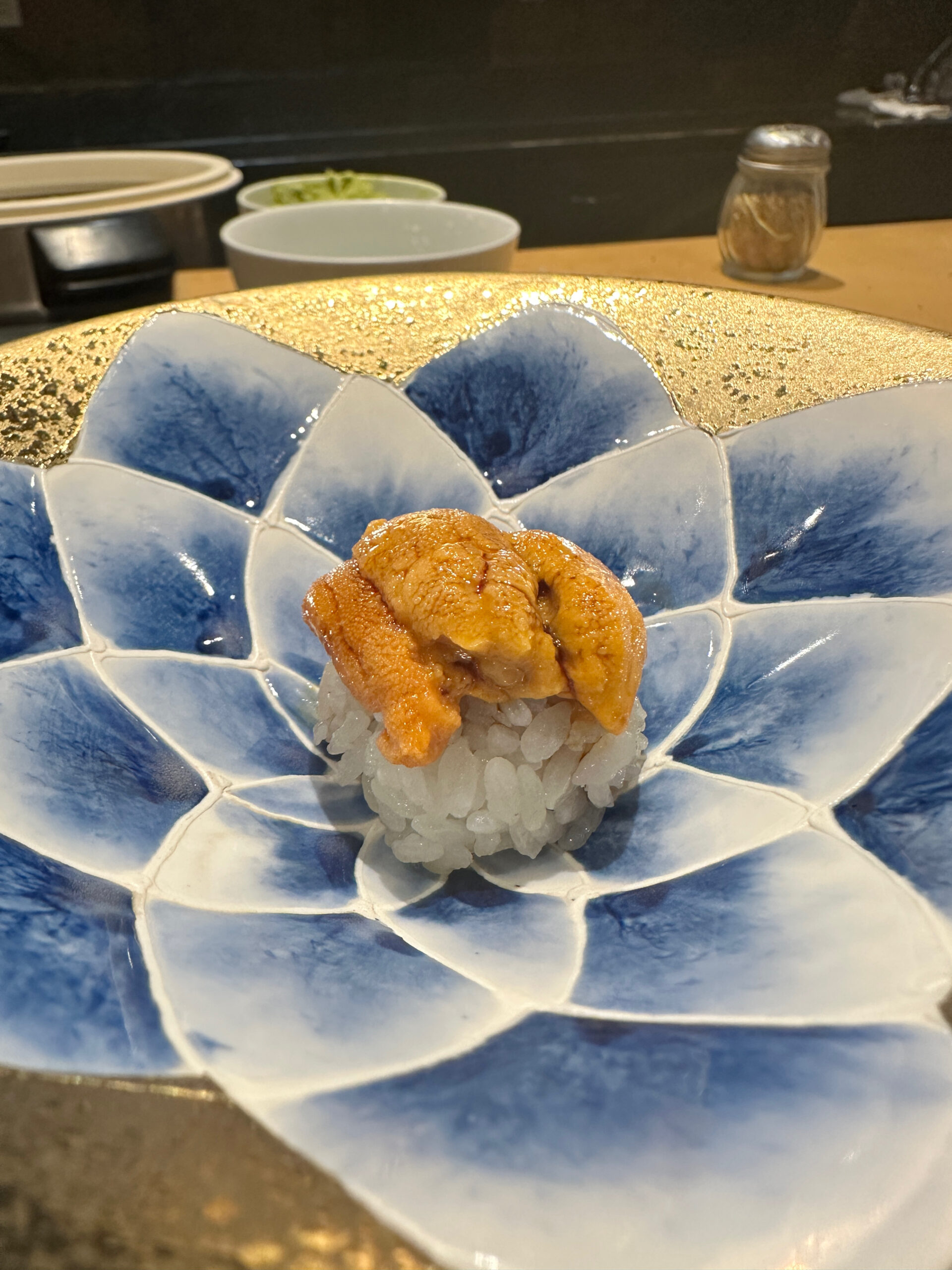
Extra 1: Hokkaido Uni ($16)
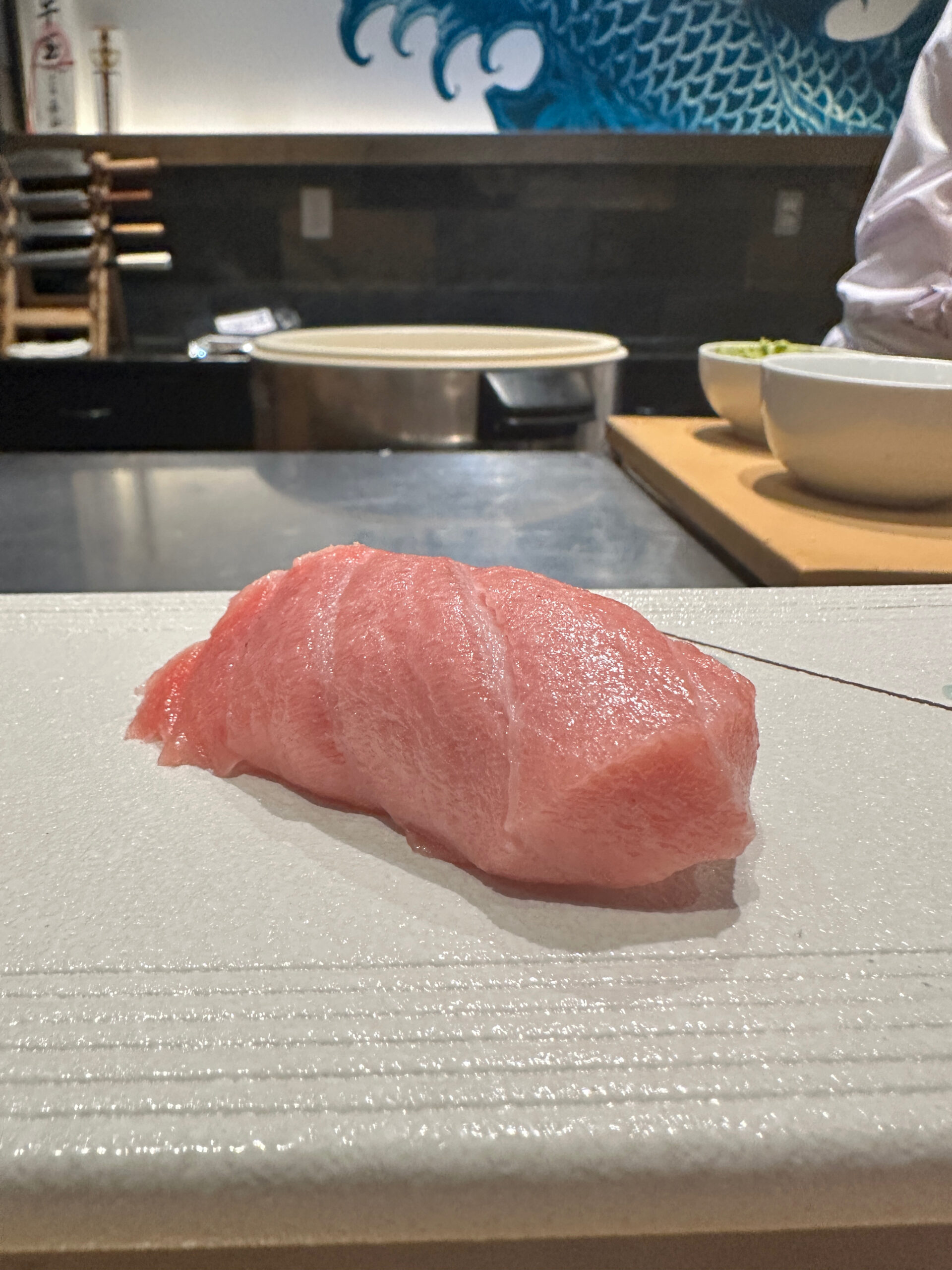
Extra 2: Chiaigishi (Chu Toro)
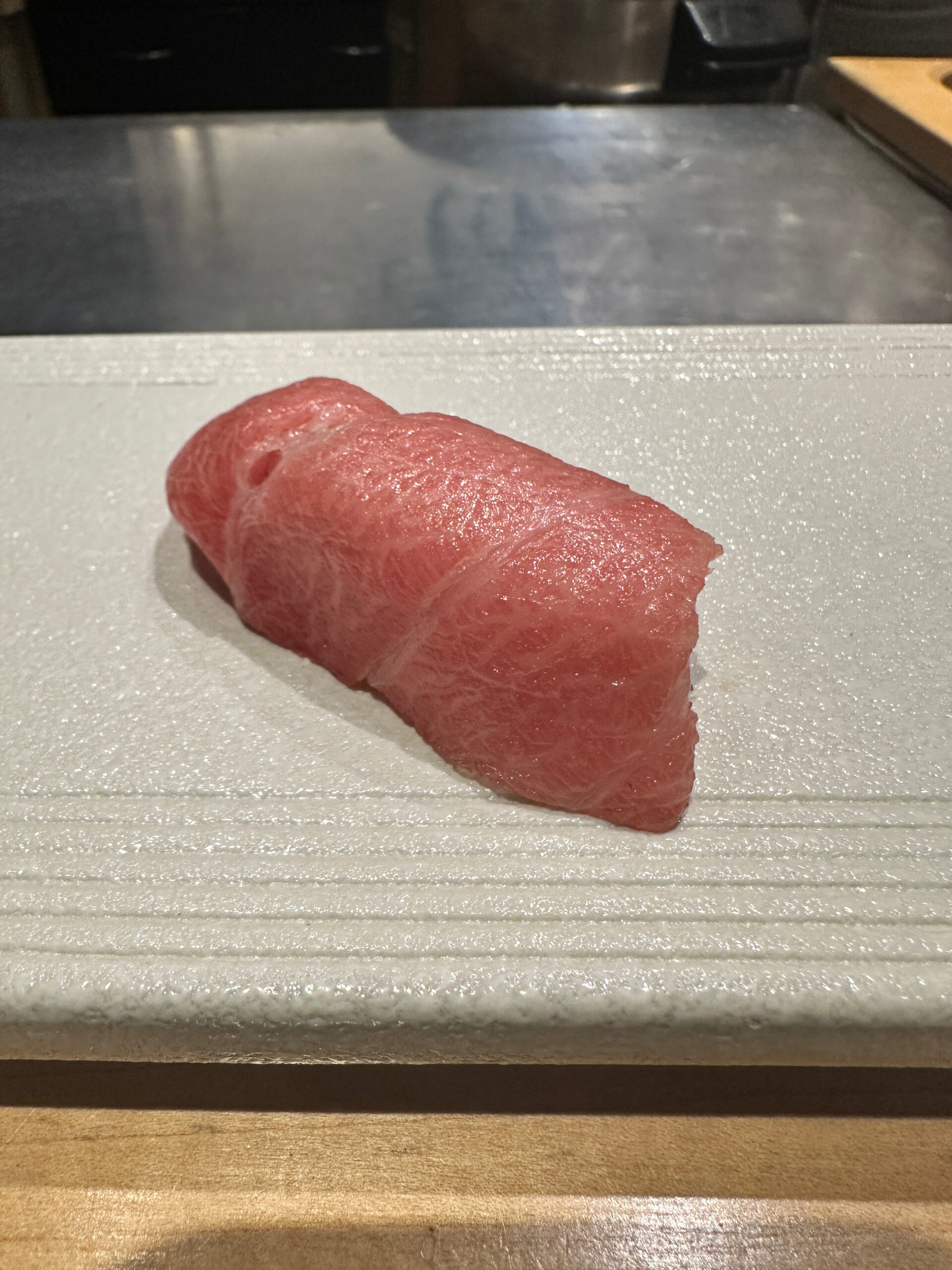
Extra 3: O Toro
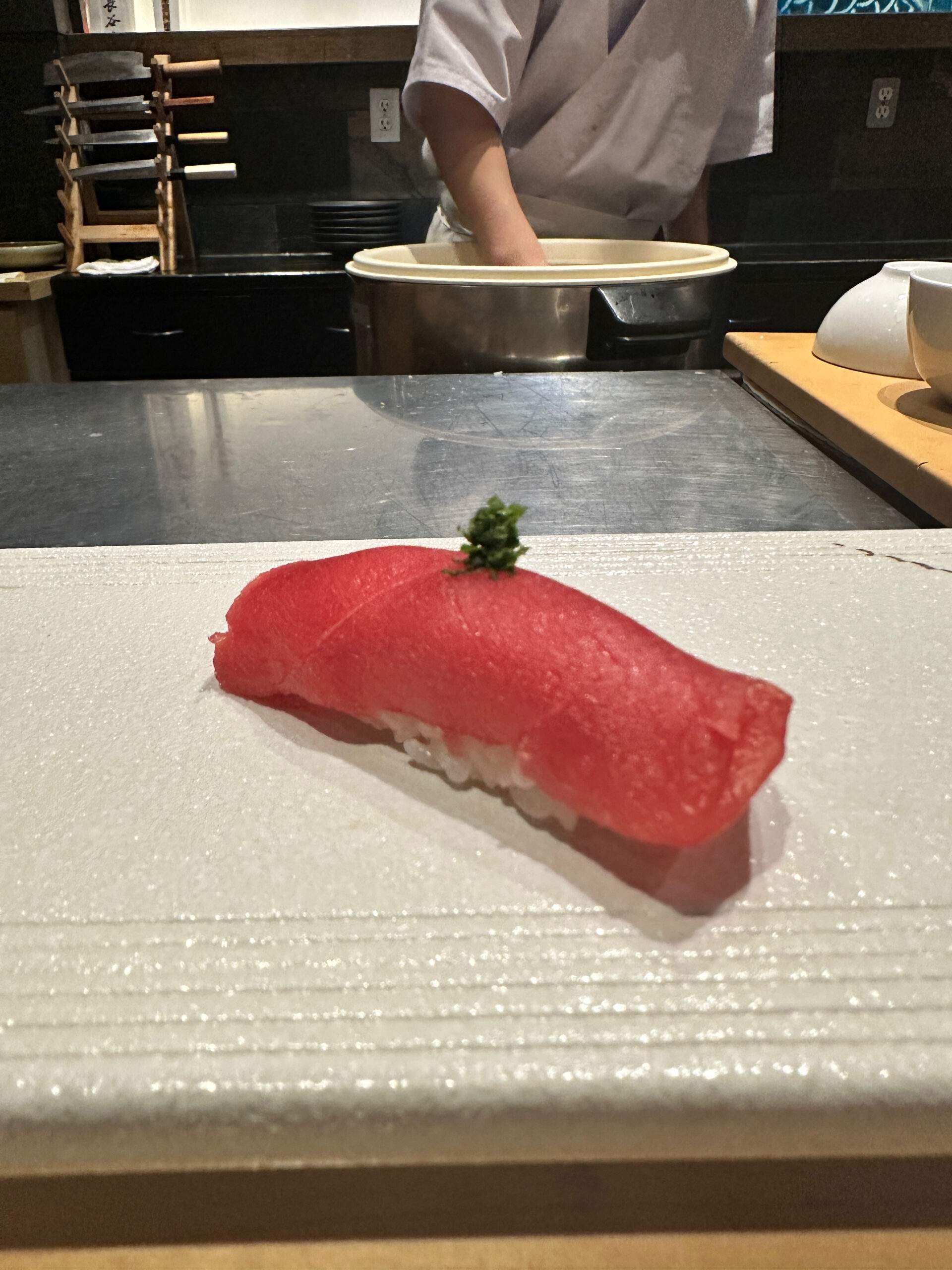
Extra 4: Akami
Quick revisit of the honmaguro
I’m going to be careful, because I’m no fishmonger (or really any monger, if we’re being honest).
But I’m 94.3% sure that Kaji offers a wild (pun intended) variety of tuna cuts.
Take the Chu Toro
You legends all know what Chu Toro is. You’re smart. But did you know that it comes from multiple parts of the Tuna? And that taste and look vary depending on where?
Kaji does. That’s why the Chu Toro on the Omakase (below left) and the Okonomi (below right) look different. To this untrained eye,the left looks like a more typical Chu Toro cut, from the middle back, while right looks like Chiaigishi, which comes from a very small part in the middle near the ‘red muscle’. It declines in freshness quickly, perhaps why it’s a special.
Then there’s the O Toro. On the left, likely Jabara, the bellows underbelly. It has, as you can likely tell, more sinew. On the right, likely Shimofuri, or marbled flesh.
The shari is fantastic
It’s not just the temperature or consistency, its the flavor – sorry, flavour – which is sweeter than typical. Turns out that Shari from the Kansai area leans that way, and Kaji-san has ties to that area. No surprise that Kaji-san plans to retire to Nara, apparently in three years.
Oh ya, he claims he’s retiring in three years
So you better go soon.
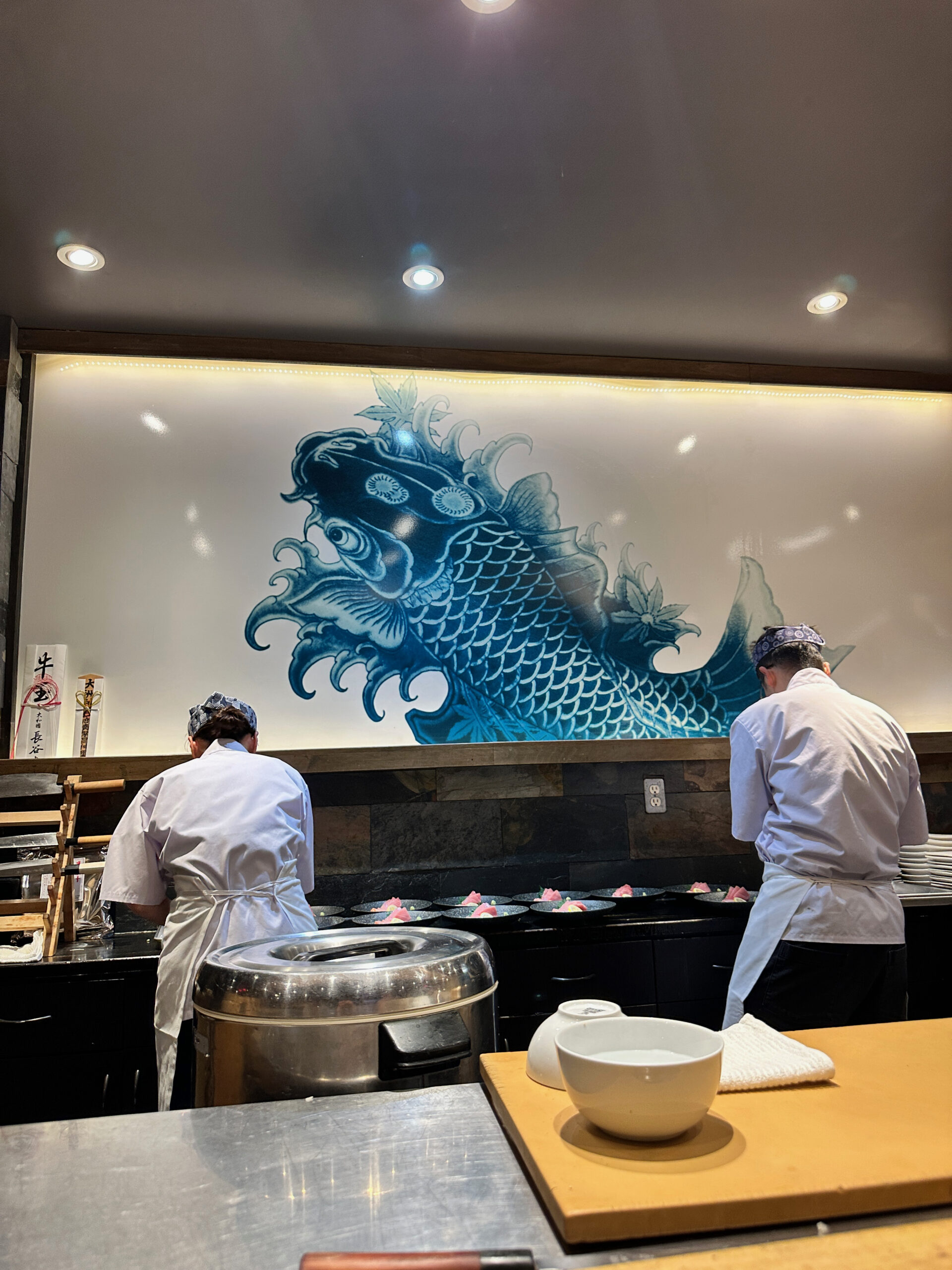
Better visit the team at Kaji soon…
Let’s get deep: It’s not a great sign that Kaji is still Toronto’s bellwether
Putting aside Sushi Masaki Saito – which I reviewed here, and fits in a completely different category – Kaji is still at the top of the Toronto sushi food chain. On one hand, very impressive. On the other, the lack of competition – the lack of progress in the market – over 25 years is concerning. To wit, my dining partner, who joined me at the new-ish and very disappointing MSSM (review here), much preferred Kaji.
It’s like me weightlifting (I promise this is going somewhere). After a rigorous set, perhaps a dropset or superset because I’m a beast, I’ll get a head rush when I stand up. On one hand, it feels great. On the other, there’s probably an underlying issue I should be deeply concerned about.
But fuck it feels good. Just like it does when I’m sitting at the counter at Sushi Kaji.
Recommended.
